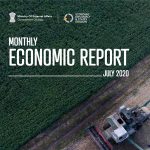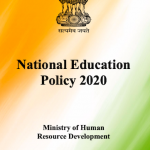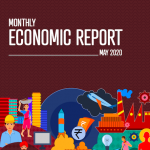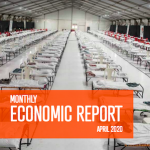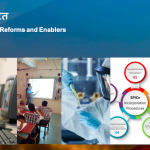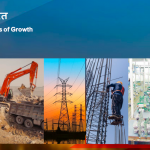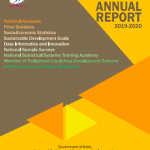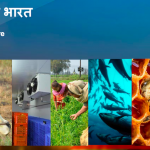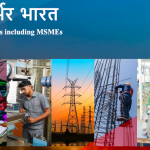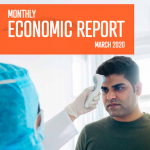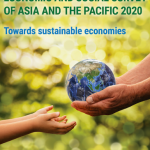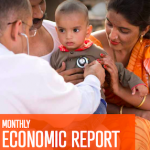-

Economic Report (July 2020)
With the gradual unlocking of the economy, we are well on the path to recovery and rehabilitation, ably supported by a plethora of Government policies. The Monthly Economic Report, July 2020 gives us insight to India’s economic revival.
-

National Education Policy 2020
The Government of India on July 29, introduced the National Education Policy 2020, a major feat that aims to drive large scale, transformational reforms in school and higher education. The policy has been designed to help India empower its rich human resource on the way to developing an inclusive and sustainable society and economy.
-

Economic Report (June 2020)
India is now gradually moving towards an economic revival led by a Rs.21 trillion (+US$280.4 billion) stimulus package aimed at delivering socioeconomic security amid the uncertainties of the global pandemic.
-

Economic Report (May 2020)
Global growth has hit unprecedented depths of despair amidst COVID-19 with substantial risks of even more severe outcomes remaining. The IMF’s World Economic Outlook of April 2020 projected global output in 2020 to contract by 3% with the output of advanced countries contracting more than emerging markets and developing economies.
-

Economic Report (April 2020)
Following a cyclical downturn, the Indian economy had begun to regain momentum with clear signs of an uptick in consumption and investment towards the end of Q3 2019-20, only to be halted by the pandemic that made the Government enforce country-wide lockdown in late March 2020.
-

Government Reforms and Enablers for COVID-19
The Government of India is working on the next phase of Ease of Doing Business Reforms related to easy registration of property, fast disposal of commercial disputes, a simpler tax regime, among others, to make India one of the easiest places to do business in.
-

Support to New Horizons of Growth
As part of the COVID-19 stimulus plan, The Government of India announced structural reforms in eight sectors – Coal, Minerals, Defence Manufacturing, Civil Aviation, Power Sector, Social Infrastructure, Space and Atomic energy – that will open up avenues for enhanced trade and investment activities
-

Annual Report 2019-20 – MoSPI
The Ministry of Statistics and Programme Implementation (MoSPI) attaches considerable importance to coverage and quality aspects of statistics released in the country. The statistics released are based on administrative sources, surveys, and censuses conducted by the Central and State Governments and non-official sources and studies.
-

COVID-19 Support to Agri Sector
India is one of the largest producers of food products in the world, spanning grains and vegetables to milk and meat. To protect the sector from the impact of Coronavirus, the Government of India has brought out a range of initiatives.
-

COVID-19 Support to the Most Vulnerable
The Government of India has provided a wide range of support, from special EPF withdrawal to food ration, to support the wort affected in the pandemic.
-

Govt Support to Businesses in COVID-19
The Government of India’s special economic package for COVID-19 worth nearly Rs.21 trillion – equivalent to 10% of India’s GDP – involves support to businesses, including MSMEs.
-

Economic Report (March 2020)
The COVID-19 pandemic has emerged as a key risk to human health and the economy the world over. As per the International Monetary Fund’s (IMF) World Economic Outlook (April 2020), global growth is expected to contract sharply by 3 per cent in 2020-21, much worse than during the global financial crisis of 2008-09. Economic Report (March 2020)
-

India’s GDP growth estimated at 4.8% in the calendar year 2020 by UNESCAP
India’s real GDP growth has been estimated at 5.1 per cent for 2021 by the United Nations Economic and Social Commission for Asia and the Pacific.
-

UN calls for US$2.5trn Coronavirus crisis package for developing countries
The world economy will go into recession this year with a predicted loss of global income in the trillions of dollars. This will spell serious trouble for developing countries, with the likely exception of China and the possible exception of India.
-

Economic Report (February 2020)
India’s US$2.9 trillion economy is estimated to record growth of 5 per cent during the financial year 2019-20 ending March 2020. GDP growth during the third quarter was 4.7 per cent, compared with the growth of 5.6 per cent and 5.1 per cent in first quarter and second quarter of 2019-20, respectively.
